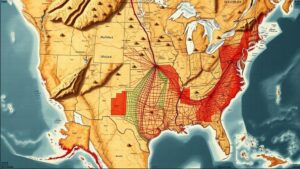Exploring Native American Legends for Clues to Artifact-Rich Sites
Exploring Native American Legends for Clues to Artifact-Rich Sites
The intertwining of mythology and archaeology offers a unique lens through which researchers can examine historical artifacts and sites. Native American legends, which encapsulate the traditions, beliefs, and histories of various tribes, can serve as crucial guides in locating artifact-rich sites. This article explores the underpinnings of using these legends as a navigational tool in archaeological endeavors.
The Role of Legends in Cultural Context
Legends play a critical role in preserving the history and cultural identity of Native American tribes. e narratives often reflect the surrounding geography, significant events, and the relationships between people and the environment. According to research published in the Journal of Ethnobiology and Ethnomedicine, folktales frequently include references to locations where significant historical events took place or where natural resources were abundant (Ellen et al., 2019).
Interpreting Legends as Clues
Many archaeologists propose that interpreting Native American legends can provide clues to discovering artifact-rich sites. For example, the tale of the Great Flood recounted by various tribes, including the Lakota and Choctaw, can guide researchers to ancient shorelines or floodplains where artifacts may have been deposited. e sites often exhibit stratified layers of sediment that contain cultural materials indicative of past human activity.
Case Studies of Artifact Discovery
Several documented cases illustrate the efficacy of blending folklore with archaeological investigations:
- The Chumash and the Channel Islands: The Chumash people’s legends about sea serpents and navigational routes have led researchers to explore the Channel Islands off the California coast. Excavation efforts have revealed extensive tool-making sites and evidence of maritime-oriented trade.
- The Iroquois and the Battle of the Longhouse: Iroquois stories hint at ancient battlefields and settlements situated in present-day New York. In 2009, archaeologists uncovered remnants of an Iroquois village near these legendary battlegrounds, yielding over 1,500 artifacts.
Challenges and Considerations
While exploring Native American legends offers promising leads for archaeological work, researchers must navigate various challenges:
- Interpretation Variability: Different tribes may have unique accounts of the same legend, complicating the archaeological context.
- Respect for Cultural Heritage: It is essential to engage with tribal communities respectfully and ethically, as legends are integral to their cultural identity.
- Legitimacy of Sources: Differentiating between historical accounts and mythological embellishments requires meticulous scholarly rigor.
Real-World Applications
The application of legends in archaeological research is already yielding real-world benefits. For example, collaborative projects among archaeologists and Native American communities have enhanced the understanding of traditional ecological knowledge and artifact preservation strategies. The National Park Service’s initiatives for integrating Native American histories in site management highlight the growing recognition of this beneficial alliance.
Conclusion
Exploring Native American legends for clues to artifact-rich sites illuminates the potential for interdisciplinary collaboration between anthropology, archaeology, and cultural studies. While this approach faces specific challenges, the successes of past endeavors stand as testimony to the rich potential embedded in these narratives. It is essential for future research to adopt a balanced, respectful methodology that honors the voices of Native American communities while advancing our understanding of historical contexts. By doing so, archaeologists can unlock new insights into the cultural legacies that shape the present.
Actionable Takeaways:
- Engage with tribal communities to gather insights into local legends that may indicate archaeological sites.
- Incorporate interdisciplinary methodologies that respect both archaeological and oral history perspectives.
- Document and share findings that reflect the contributions and beliefs of Native American cultures in research articles and public outreach.
Through the continued exploration of these legends, archaeologists can hope to uncover valuable artifacts and deepen the understanding of the rich narratives that have shaped the Native American experience.
References
- Ellen, R., et al. (2019). The Role of Ethnobiology in Historic Preservation. Journal of Ethnobiology and Ethnomedicine.

